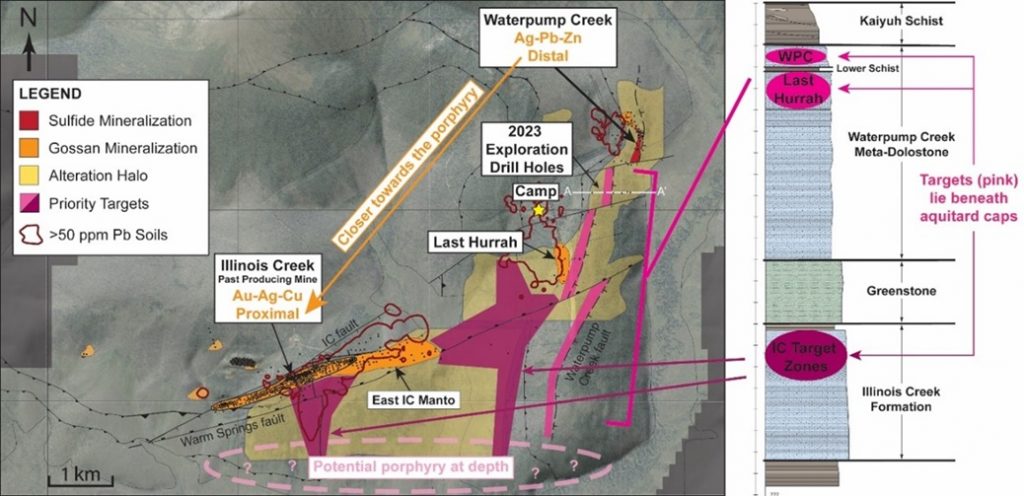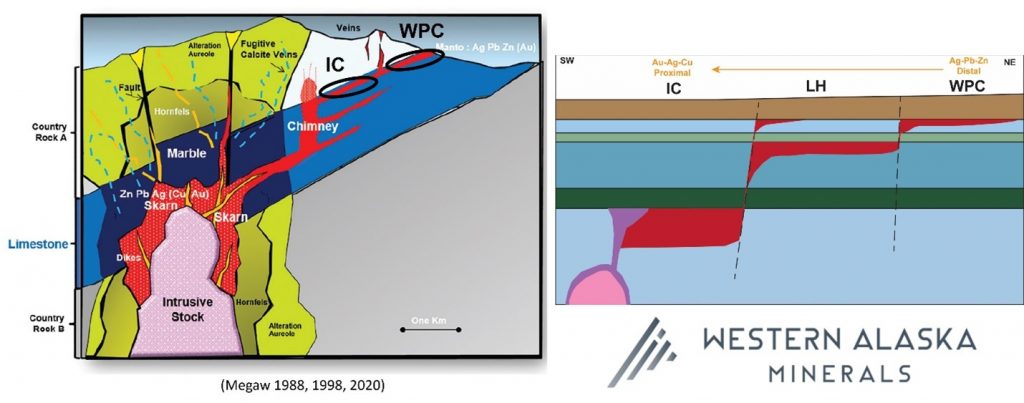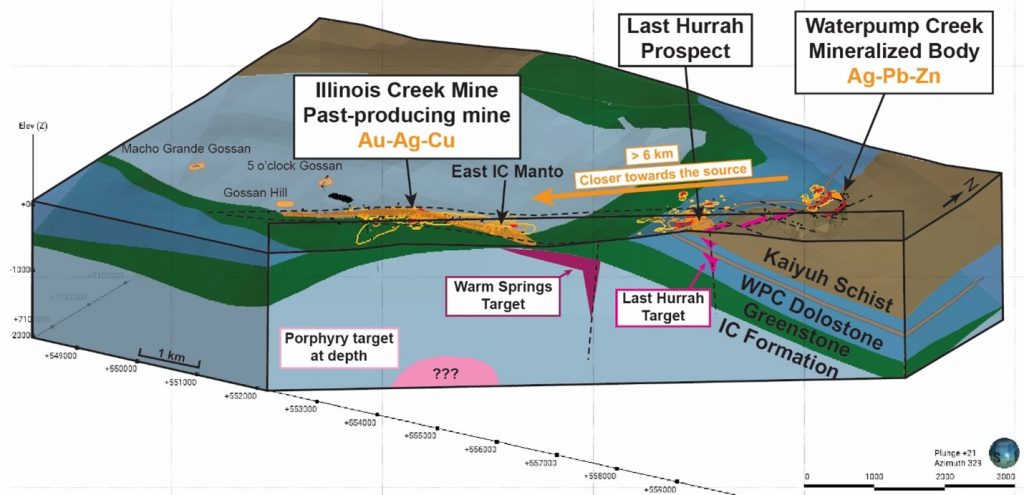
Western Alaska Minerals (TSXV:WAM) recently completed its 2023 exploration activities at the Illinois Creek Carbonate Replacement Deposit (CRD) project, which it wholly owns. Located in central Alaska, the project encompasses approximately 30,000 hectares.
CEO Kit Marrs commented in a press release: “It is rare for a junior exploration company to control, in a stable mining jurisdiction, an entire, intact system of this scale, that even at this early stage is showing the hallmarks of a well-mineralized CRD system. It took several tries with the drill bit at WPC, but once we intercepted the exceptionally high-grade silver-lead-zinc sulfides there, it took just two seasons of drilling to flesh out a substantial zone, justifying the calculation of an initial mineral resource estimate. Results to date suggest that WPC is just the fingertip of a 6 km-long mineralized trend that runs back to Illinois Creek, of which only 8% has been drill tested to date. With our updated understanding of the system, we are excited to be zeroing in at Last Hurrah and continuing to trace high-grade mineralization back towards Illinois Creek.”
The site includes a six-kilometer corridor of CRD-style alteration, structural features, and stratigraphy favorable for mineral deposits. This corridor connects the previously mined Illinois Creek Mine, known for gold and silver deposits, with the Waterpump Creek massive sulfide CRD deposit, rich in silver, lead, and zinc.
In 2023, WAM focused its drilling efforts on two areas: Waterpump Creek and the Last Hurrah target area. At Waterpump Creek, five drill holes totaling 1,706 meters aimed to expand the known high-grade sulfide mineralization. The most notable outcome was from drill hole WPC23-30, which intersected significant mineralization, including 40.2 meters with high concentrations of silver, lead, and zinc.
The exploration then shifted to the Last Hurrah area, located 700 meters south across a fault line. This site, based on geophysical surveys and previous drilling, was believed to be part of the mineralized corridor. Nine drill holes totaling 3,412 meters were completed here, encountering broad zones of CRD alteration and dispersed mineralization. Two of these holes indicated the potential for mineralization in deeper limestone units, suggesting new avenues for exploration across the property.
The company’s technical team is integrating these findings into an enhanced district model, which is being prepared for the next drilling season. This model also includes a reinterpretation of the geophysics.
WAM’s exploration results support the theory of a continuous and intensifying pattern of CRD-style mineralization and alteration extending south and west. This pattern aligns with the district’s zonation, transitioning from low-temperature silver-zinc-lead mineralization at Waterpump Creek to higher-temperature copper-gold-silver deposits at Illinois Creek.
Additional exploration at the Last Hurrah area in 2023 revealed strong CRD alteration in most drill holes, with fugitive carbonate veins indicative of proximity to mineralization. Geophysical surveys suggested an increase in the alteration’s extent toward the Illinois Creek mine. However, no massive sulfides were intersected in this area.
A comprehensive 3-D resistivity and induced polarization survey conducted over Waterpump Creek and Last Hurrah target areas by DIAS Geophysical highlighted key structural and stratigraphic controls of CRD mineralization. The survey also identified distinct fault structures, including a potential north-south fault that could be controlling the mineralizing fluids.
The 2023 drilling program at Waterpump Creek, comprising five holes totaling 1,706 meters, yielded significant results. These included high-grade silver-lead-zinc infill and expansion, with notable intercepts in multiple drill holes. This data is contributing to a preliminary NI 43-101 compliant resource estimate, expected to be published in early 2024.


Highlights from the results are as follows:
- In-fill and additional high-grade intercepts from step-out drilling at Waterpump Creek were completed, adding 45 meters to the mineralization trend, allowing for an initial NI 43-101 complaint resource estimate, anticipated in Q1 2024.
- Exploration drilling at Last Hurrah yielded strong CRD alteration which correlates with both the 2005 and 2023 modelled geophysics (Figures 1,3, and 4). More importantly, the alteration and anomalous geochemistry occur in two separate stratigraphic units, effectively doubling the exploration potential.
- The 2023 and prior drilling results now indicate that three carbonate units exist, separated by impermeable or unreactive units, and a progressive southwesterly shift of mineralization focus from the uppermost carbonate at WPC, through the middle unit at LH and the deepest known unit at Illinois Creek (Figure 2).
- This new geologic recognition, combined with advanced remodeling of the eleven square-kilometer high-resolution 3D geophysical survey covering both WPC and Last Hurrah, is helping to determine the structural and stratigraphic controls on mineralizing fluid migration from the probable porphyry source near the Illinois Creek Mine, through Last Hurrah to WPC (Figure 3).



 Follow us on Twitter
Follow us on Twitter Become our facebook fan
Become our facebook fan










Comments are closed.